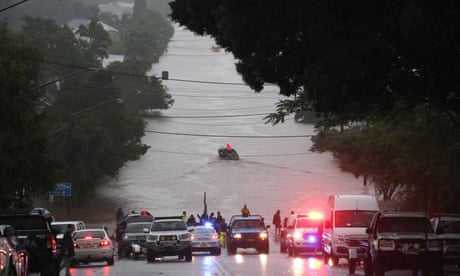Extract from The Guardian
Weather pattern slashes rainfall in Australia’s southernmost state while temperatures soar

Last modified on Thu 3 Mar 2022 15.34 AEDT
While Queensland and New South Wales have been hit with historic rainfall and floods, Tasmania has endured its driest summer in 40 years.
The island state’s west and south-west – both sparsely populated and typically wet – recorded their lowest levels of rainfall on record, the Bureau of Meteorology said.
This meant that across the state it was driest summer since 1980-81, and the fourth driest since records began more than a century ago. Total rainfall was 43% below the long-term average. Parts of the south-west had between 200mm and 400mm less rain than they normally would in summer.

This was consistent with projections of changed rainfall across the state due to rising temperatures caused by greenhouse gas emissions. A major report by the Intergovernmental Panel on Climate Change published this week found that global heating was expected to lead to more winter rain in Tasmania but a reduction in summer rain in the state’s west.
During a La Niña event, strong trade winds blow west across the Pacific Ocean, pushing warm surface water towards Asia and the seas north of Australia. The warmer waters lead to increased rainfall across northern and eastern Australia but play a different role further south.
“The predominant wind direction for Tasmania is westerly but this summer we’ve had a lot of easterly winds,” Forrest said. “It is highly unusual but that is the impact a La Niña has on Tasmania’s climate. It basically swings the wind around.”
The Tasmanian dry spell coincided with one of the state’s hottest summers on record. The mean temperature across days and nights was 1.3C higher than average, making it the fifth warmest summer since records began. The average maximum day time temperature was 1.7C above the long-term average.
Across the country, it was the 17th warmest summer on record. It was 0.73C above the long-term average measured across the years 1961 to 1990, but cooler than some recent summers, reflecting La Niña’s impact. Summer rainfall was close to average for Australia as a whole.
The IPCC last year reported that human activities were unequivocally heating the planet, affecting weather and climate extremes in every region across the globe and helping to cause increased heatwaves, heavier rainfall events and more intense droughts and tropical cyclones.
In Australia it found that average temperatures above land had already increased by about 1.4C since 1910. Annual changes in temperature were now above what could be expected from natural variation in all regions across the continent.
A scientific review has concluded that the frequency of El Niño, which is associated with higher temperatures in eastern Australia, and La Niña events were expected to increase under business-as-usual scenarios of greenhouse gas emissions.
No comments:
Post a Comment